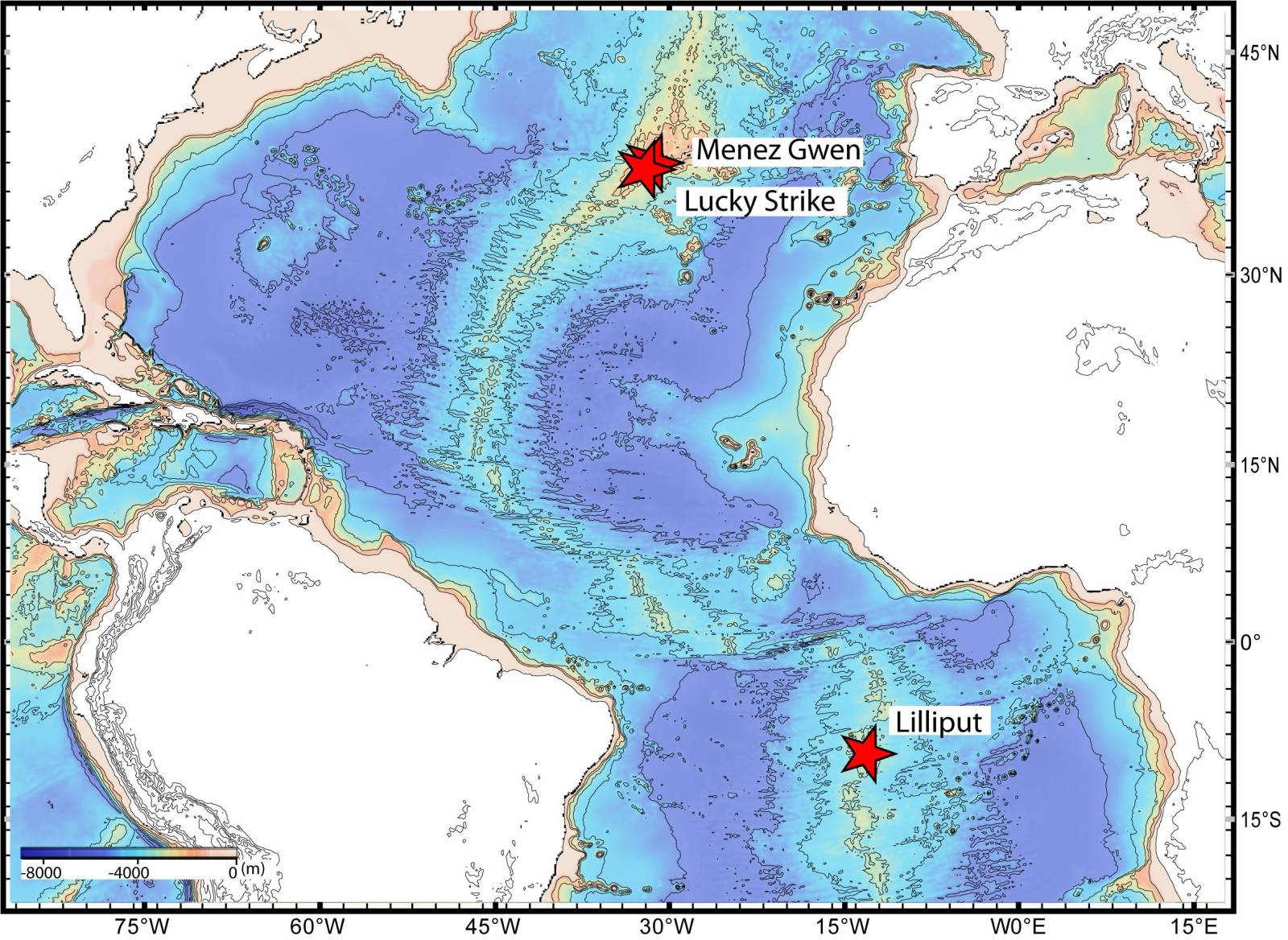Mussel bacterial symbiosis
Interview with
Jillian Petersen, from the University of Vienna, has been looking at how mussels  team up with microbes that feed them. Genetically, these bacteria are endowed with a hefty arsenal of toxins, which they might use to defend their mussel hosts, or just to start a chemical conversation with them. She spoke to Chris Smith about the research...
team up with microbes that feed them. Genetically, these bacteria are endowed with a hefty arsenal of toxins, which they might use to defend their mussel hosts, or just to start a chemical conversation with them. She spoke to Chris Smith about the research...
Jillian - These mussels are found all around the world in the deep sea, at oases of life of hydrothermal vents. They are the most dominant animals found at hydrothermal vents, and they are able to live there because they associate very intimately with a certain type of bacteria. Now the deep sea is known to very nutrient poor, there is very food in the deep sea for animals, but it's not true that the whole deep sea is completely devoid of food. In fact, you may have heard of hydrothermal vents, you may have even seen the images of these impressive black smokers, fluids that look like black smoke pouring out of a chimney. In fact, it's pouring out of the sea floor. This black smoke is composed of a toxic chemical mix of things like hydrogen sulphide and methane, and this is actually an excellent food source for bacteria. The only way that animals can live in these extreme environments is by teaming up with bacteria that use these chemicals to power primary production, and through this chemosynthetic primary production they can feed their hosts.
Chris - Where do the bacteria live in the host? Do the bacteria live outside the host and the host eat the bacteria or is the relationship more intimate?
Jillian - This is an extremely intimate symbiosis. The bacteria live inside of cells of the animal and they are hosted in an organ called the gills, and this is usually the organ marine animals use to breath underwater. But in this case the organ has become much larger because it's housing an enormous population of symbiotic bacteria.
Chris - Are these bacteria only found at these hydrothermal vents or do they have a lot of factors in common with bugs that we would find elsewhere all over earth?
Jillian - We were trying to understand more about these symbiotic bacteria, so we did some genome sequencing and when we compared the deep sea symbiotic bacteria to all other known bacteria, let's say pathogens or environmental bacteria, we were surprised to find that they very much resemble pathogenic bacteria that are known to cause disease in humans. For example they encode an enormous number of toxin-like genes in their genomes and this was unexpected because we know that these bacteria are beneficial for their hosts.
Chris - Where do they come from then, these micro-organisms? Did they start life as pathogens and have found their way into the deep sea or, do you think the equation worked in the opposite direction?
Jillian - For a long time, researchers thought that symbioses may have evolved from pathogenic interactions: that first interaction was was a pathogen, but over time they learned to live in cooperation with their hosts, and eventually might have become beneficial. But our study, and many others of symbiotic bacteria, have shown that these beneficial bacteria actually far outnumber the pathogenic bacteria on our planet, and even on and in our own bodies. So it may be that pathogenesis is the exception and these bacteria first evolved to help us, and in very rare cases they actually harm us.
Chris - How do the toxins that you've found in these symbionts work? What are they doing in the context of the mussels that they associate with?
Jillian - The way that we look at this is to compare them to genes or proteins that are very similar, where the toxic activity has actually been shown in laboratory studies. Many similar toxins have been shown to mediate communication between animals and bacteria, ours may have a similar function. We know that bacteria need to be recognised by the host. There are millions of species of bacteria in their environments, and yet they can recognise their own symbiont out of this myriad of environmental bacteria; and then the bacteria need to invade the host cells. There needs to be mechanisms of recognition and communication where a symbiont says "Hi, here I am," and a host says "I recognise you, you're a friend, please come in." Another role that these toxins might have is to protect the symbiosis, so to protect the host from its natural enemies and this is something that has been overlooked. There have only been a couple of studies investigating pathogenesis or parasites in the deep sea. These deep sea mussel beds can be up to five times as dense as the mussel beds you would find in coastal regions and this is the perfect oasis for a parasitic organism. There is very little known about how they manage do defend themselves, and that's our second hypothesis that some these toxins might be involved in defending the host against parasites. This came up because we noticed one particular species of mussel that has, over evolution, lost the symbiont that encodes the toxins, and this particular mussel species is very heavily infected by a parasite, a trematode parasite, that infects the gonads and eats all the reproductive tissue of the mussel. It's a pretty nasty parasite. So this is what we call a defensive symbiosis, that the symbiont may be able to defend the host against a common enemy.










Comments
Add a comment